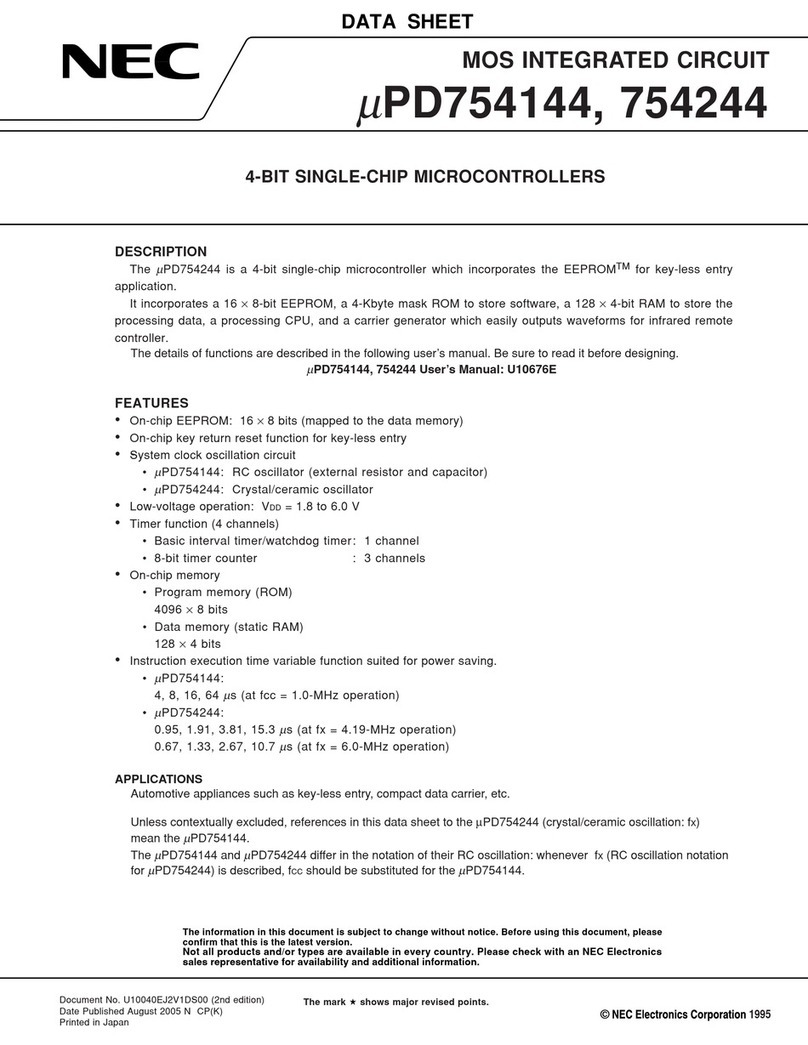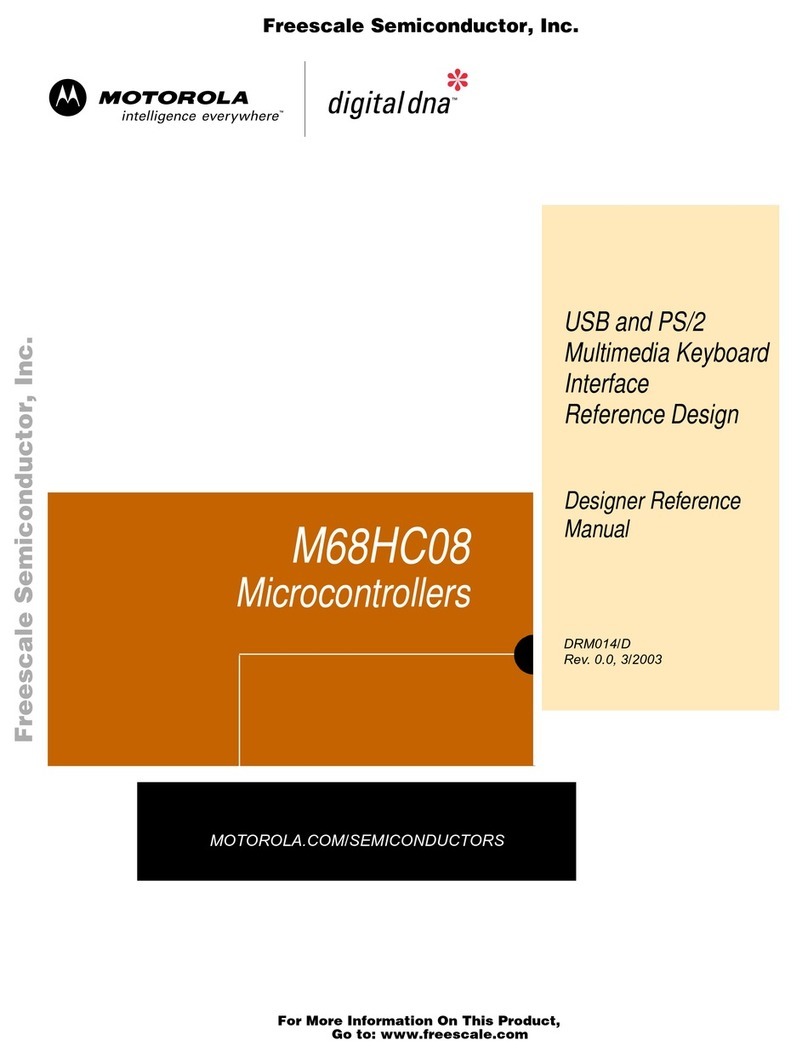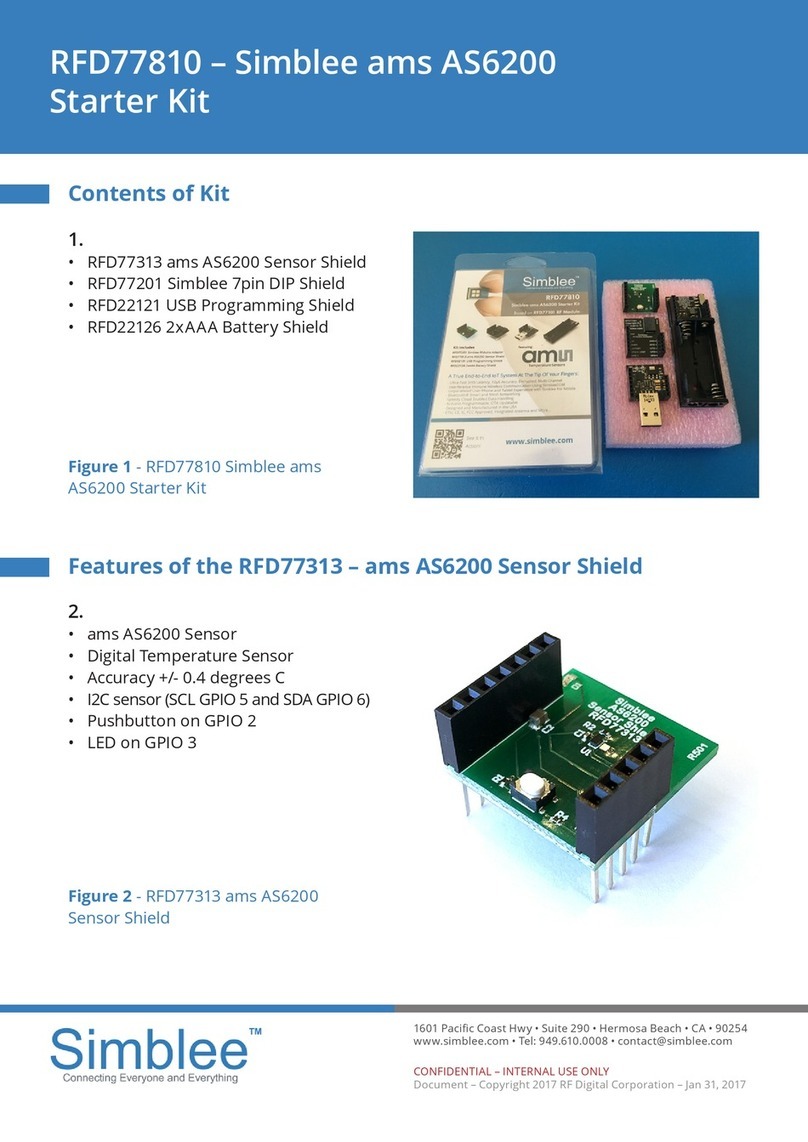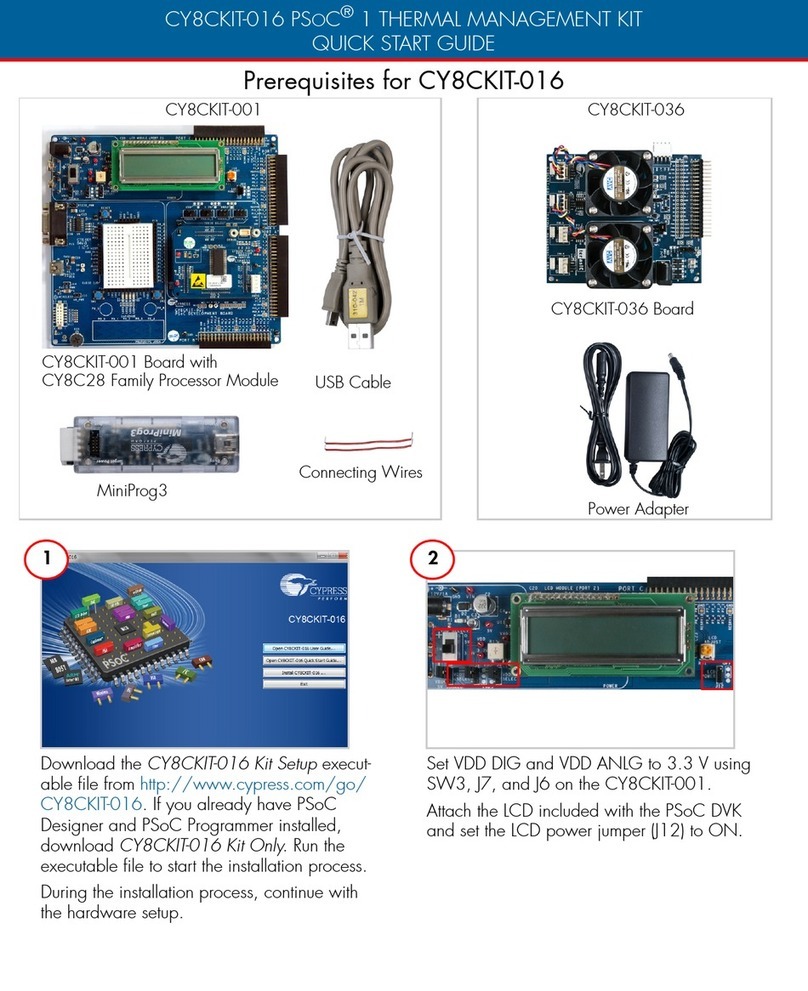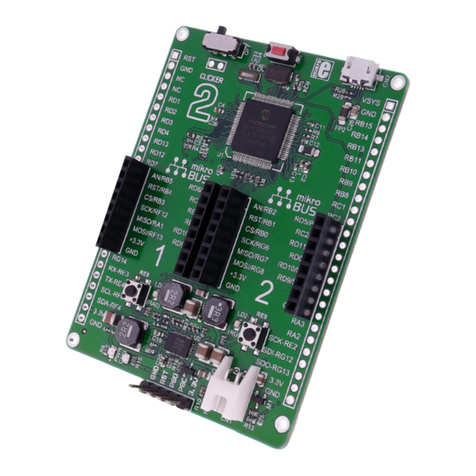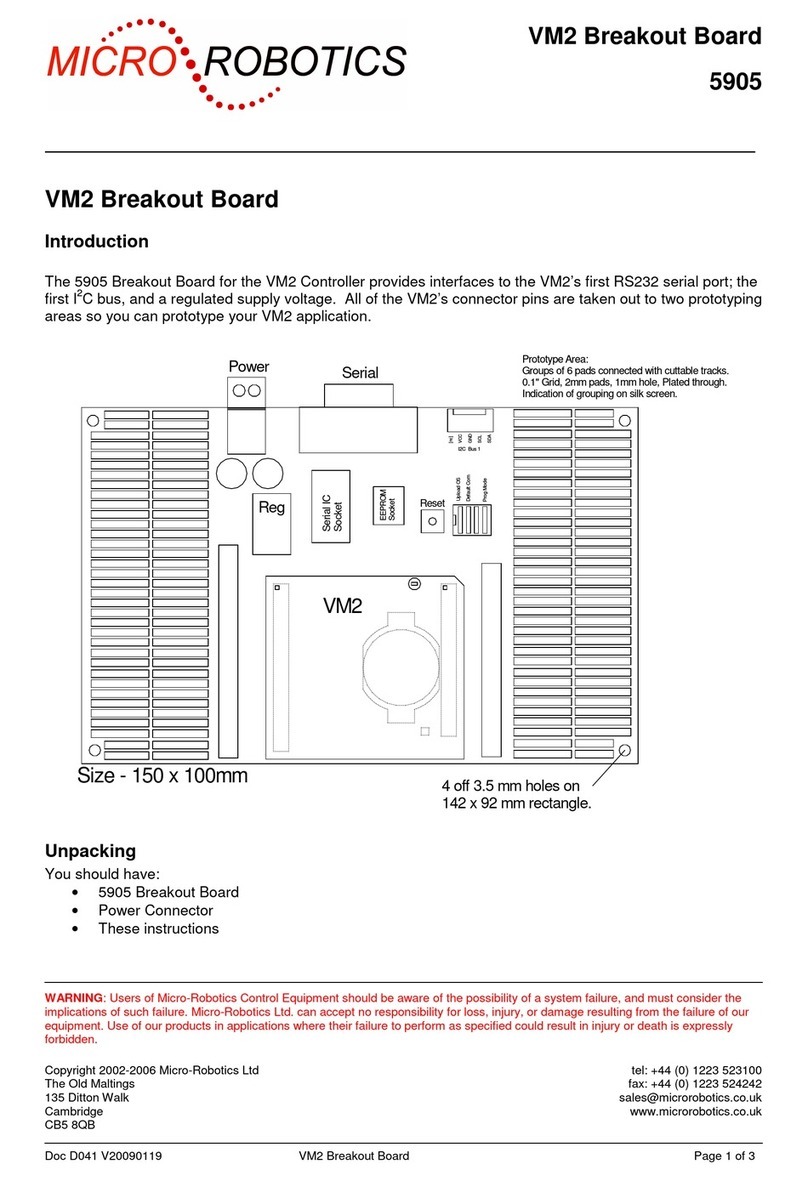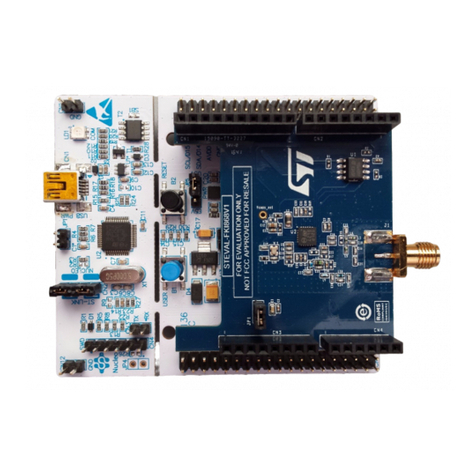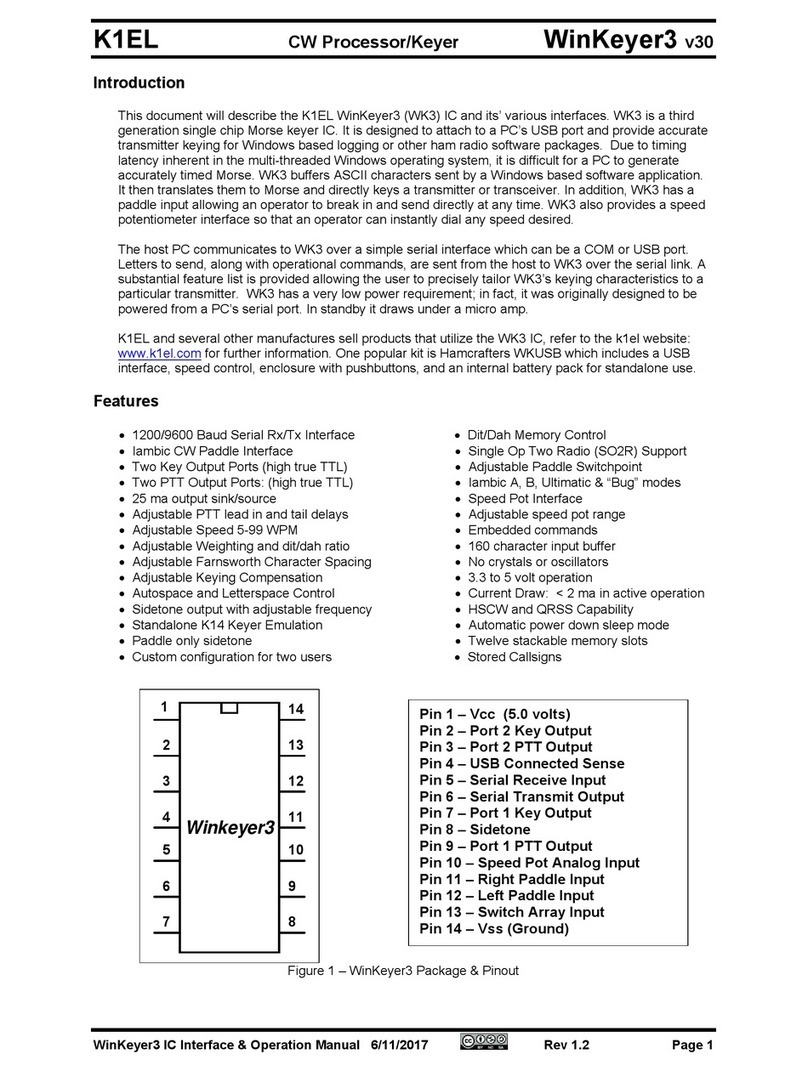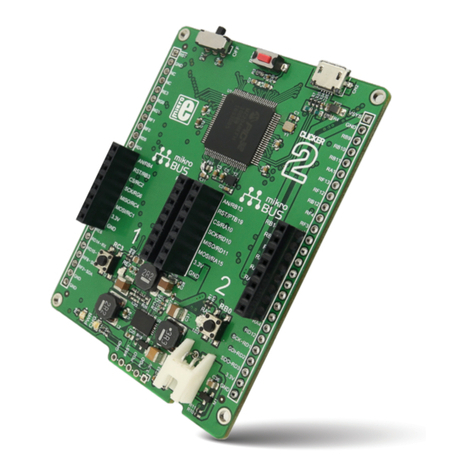Tetenal COLORTEC E-6 User manual

COLORTEC©E-6
3-BATH · 3-BAINS
3-BAÑOS · 3-BADEN
3-BADS · 3-BADS
3-KĄPIELOWY
Instruction for use · Gebrauchsanweisung · Mode d’emploi
Instruccion de empleo · Istruzioni per l’uso
Gebruiksaanwijzing · Bruksanvisning · Instrukcja mieszania
2,5 lKit for · für · pour · para
per · voor · för · na
Art. Nr. 102036

2
ENGLISH 03
DEUTSCH 10
FRANÇAIS 17
ESPAÑOL 24
ITALIANO 31
NEDERLANDS 38
SVENSK 45
POLSKI 52
COLORTEC©E-6

3
ENGLISH
PRODUCT DESCRIPTION
The Tetenal COLORTEC©range offers a high level of performance, quality, safety, con-
venience, environmental friendliness and service. COLORTEC©- the “best available
technology” for colour chemicals.
COLORTEC©E-6 3-BATH is designed for the development of E-6 compatible colour
slide films in rotary tube processors. With the “3-Bath technology” the number of proces-
sing baths is reduced to three (+ Stabilizer). The reversal takes place during the colour
development. Bleaching and fixing are performed in a Bleach Fix.
PACKAGE CONTENT
COLORTEC©E-6 Kit "3-Bath" for 2.5 litres. Art. No. 102036
First Developer FD 500 ml conc.
Colour Developer CD Part 1 500 ml conc.
Colour Developer CD Part 2 500 ml conc.
Bleach Fix BX Part 1 500 ml conc.
Bleach Fix BX Part 2 500 ml conc.
Stabilizer STAB 500 ml conc.
YIELD
Working Solution Films 135-36 Rolls 120
2.5 litres 30 30
Maximum yield is achieved only by processing at least two films at a time.

4
MIXING
Water Part 1 Part 2 Working
Solution
20-25 °C /
68-77 °F
First Developer FD 400 ml 100 ml 0.5 l
800 ml 200 ml 1.0 l
2000 ml 500 ml 2.5 l
Colour Developer CD 300 ml 100 ml 100 ml 0.5 l
600 ml 200 ml 200 ml 1.0 l
1500 ml 500 ml 500 ml 2.5 l
Bleach Fix BX 300 ml 100 ml 100 ml 0.5 l
600 ml 200 ml 200 ml 1.0 l
1500 ml 500 ml 500 ml 2.5 l
Stabilizer STAB 400 ml 100 ml 0.5 l
800 ml 200 ml 1.0 l
2000 ml 500 ml 2.5 l
Partial mixing possible, e.g. for 5 x 500 ml.
NOTES ON MIXING:
The first developer must be mixed first and the solution sealed in the container so
that it is airproof in order to prevent contamination of the first developer from the
colour developer.
Partial mixing of the colour developer requires special accuracy - the slightest
deviations alter the film colour balance. The working solution is coloured blue-violet;
eventually turning yellowish-brown when left to stand.

5
PROCESSING
STANDARD DEVELOPMENT AT 38 °C / 100 °F
Temp. °F Processing time
Step 500 ml
1-2
Films
1000 ml
1-4
Films
500 ml
3-4 / 1-6
Films
1000 ml
5-8 / 1-12
Films
500 ml
5-6
Films
1000 ml
9-12
Films
0 Pre-heat the
developer drum 100 ± 0.5 5' 00''
1 First Developer 100 ± 0.5 6' 15'' 6' 30'' 6' 45''
2 Washing 100 ± 1.0 2' 30''
3 Colour Developer
100 ± 1.0 6' 00'' 7' 00'' 8' 00''
4 Wash 97 ± 5.0 2' 30''
5 Bleach Fix 97 ± 5.0 6' 00'' 7' 00'' 8' 00''
6 Wash 97 ± 5.0 4' 00''
7 Stabilizer 68 - 77 1' 00''
NOTES ON PROCESSING STEPS:
The times given represent the time from the first contact of the film with the relevant
bath to the first contact with the following bath or rinse.
Steps 0-2 to be carried out in complete darkness.
First Developer times must be adapted individually to suit the combination of deve-
loper machine, film make, speed of rotation and the proportion of film area to the
quantity of first developer.
Extended First Developer time (+ 25 %) = brighter slides by one stop (approx.), red-
uced (- 25 %) = darker slides by one stop (approx.)
Carry out rinses with running water or change water every 30 secs. or rinse over
longer periods.
Agitation Step 1 (FD), 3 (CD), 5 (BX): constantly during first 15 secs, then once every
15 secs.
Stabilizing is performed outside the tank.

6
DEVELOPMENT AT 38 °C / 100 °F LEADING TO CHANGES IN SENSITIVITY
Under-exposed or over-exposed slide films can be influenced by changes during the
first developer time:
2 stops Push 2 + 5' 30''
1 stop Push 1 + 2' 00''
1 stop Pull 1 - 2' 00''
2 stops Pull 2 FD time unchanged,
reduce temperature to 30,6 °C
3 stops Pull 3 FD time unchanged,
reduce temperature to 30,6 °C
GENERAL INSTRUCTIONS
PROCESSING
In rotary processors, drum, cover and film reeds are to be cleaned thoroughly with
warm water after each development process. Before each new process they must be
absolutely dry.
Certain plastics absorb traces of the colour developer strongly and permanently.
Consequently, rotary equipment with trays and other parts made of plastics are not
suitable for this process.
The first developer is the critical phase of the process. Time, temperature and agi-
tation must be constantly monitored. Deviations from these conditions will impact
on veiling (minimum density) and loss of sensitivity (density). Any contamination of
the first developer with even the slightest traces of the colour developer (including
vapour) results in lower final densities (maximum density).
Used and unused solutions should not be mixed because of possible contamination.
INFLUENCE ON COLOUR BALANCE
The colour balance can be affected by a change in the pH value of the colour developer.
Reduction of pH value –> addition of 20% sulphuric acid (H2SO4), abt. 4-6 ml per litre.
Increase in pH value –> addition of 20% sodium hydroxide solution (NaOH), abt. 4-6
ml per litre.

7
CHANGES IN ALKALINITY OF COLOUR DEVELOPER
when using E-6 control strip
Film-
manu-
facturer
Colour de
viation
from
reference
standard
Density variation in
colour step (the maxi-
mum spread of 0,13 is
exceeded)
Suitable amount of
acid or base added
Approximate
change in
density values in
colour step
Kodak To
blue-magenta
To
yellow-green
Blue density is under
red density, green
density is under red
density
Blue density is over red
density, green density
is under red density
1 ml diluted sodium
hydroxide solution per
litre colour developer
1 ml diluted sulphuric
acid per litre colour
developer
+ 0,05 to
yellow-green
+ 0,05 to
blue-magenta
Fuji To
red
To
cyan
Red density is under
blue and green density
Red density is over
blue and green density
1 ml diluted sodium
hydroxide solution per
litre colour developer
1 ml diluted sulphuric
acid per litre colour
developer
+ 0,05 to
cyan
+ 0,05 to red
DEVIATIONS IN RESULTS
Results Possible causes Measure
Slides too light Over-exposure
Temperature of the first developer
too high
First developing time too long
Agitation at the first developing too
intensive
Contamination of the first developer
with bleach-fixing bath
Check camera resp. exposure
Reduce temperature
Shorten first development time by 15
to 30 s
Reduce agitation
Rinse equipment and spiral thoroughly.

8
Results Possible causes Measure
Slides too dark Under-exposure
Temperature of the first developer
too low
Prewarming of the processor resp.
tank has been omitted
First developing time too short
Agitation at the developing too slow
Check camera resp. exposure
Lengthen first development time
by 15 to 30 s
Max. density
green
Contamination of the colour deve-
loper resp. first developer with the
stabilizing bath
Clean developing kit and spirals
immediately after stabilizing
D-max too light,
appearance
from reddish-
brown to green,
depending on
the contamina-
tion ratio.
Contamination of the first developer
with colour developer (refer to mi-
xing instruction)
Refer to the hint given under mixing
instruction
Uneven colour
areas, streaks
and stripes
Insufficient or uneven agitation
No constant temperature of the
developing equipment
Overlapping insert (for Colenta)
Fill in first developer quickly, begin
agitation at once
Use insert with fewer vanes
Colour fog,
wrong colours
Not clean developing tank or mixing
vessels
Contamination of one developer
with another
Drying spots on
the dry film
Too hard tap water when preparing
the stabilizing bath
Mix tap water with distilled or deminera-
lized water in the proportion 1:2
In addition use a soft film wiper

9
DURABILITY
Freshly applied
solution
50% used
solution
Opened
concentrations
First Developer FD 8 weeks 12 weeks 24 weeks
Colour Developer CD
12 weeks 6 weeks 24 weeks
Bleach Fix BX /
Stabilizer STAB
12 weeks 12 weeks 24 weeks
After partial removal protect concentrates in totally sealed original bottles using Protec-
tan. Keep working solutions in completely full and well sealed bottles.

10
DEUTSCH
PRODUKTBESCHREIBUNG
Das Tetenal COLORTEC©-Sortiment bietet Ihnen ein hohes Maß an Leistung, Qualität,
Sicherheit, Anwenderfreundlichkeit, Umweltverträglichkeit und Service. COLORTEC©–
die „Best available Technology“ für Colorchemikalien.
COLORTEC©E-6 3-BAD ist für die typgerechte Entwicklung von E-6 kompatiblen Color-
diafilmen in der Kipp- und Rotationsverarbeitung konzipiert worden.
Durch die „3-Bath Technology“ konnte die Anzahl der Prozeßbäder auf 3 (+ Stabili-
sierbad) reduziert werden. Die Umkehrung erfolgt während der Farbentwicklung, das
Bleichen und Fixieren in einem kombinierten Bleichfixierbad.
PACKUNGSINHALT
COLORTEC©E-6 Kit "3-Bad" für 2,5 Liter. Art. Nr. 102036
Erstentwickler FD 500 ml conc.
Farbentwickler CD Part 1 500 ml conc.
Farbentwickler CD Part 2 500 ml conc.
Bleichfixierbad BX Part 1 500 ml conc.
Bleichfixierbad BX Part 2 500 ml conc.
Stabilisierbad STAB 500 ml conc.
ERGIEBIGKEIT
Arbeitslösung 135-36 Rollfilm 120
2.5 Liter 30 30
Die maximale Ergiebigkeit wird nur bei mindestens zwei Filmen pro Durchgang erreicht.

11
ANSATZ
Wasser
20-25 °C
Part 1 Part 2 Arbeits-
lösung
Erstentwickler FD 400 ml 100 ml 0,5 l
800 ml 200 ml 1,0 l
2000 ml 500 ml 2,5 l
Farbentwickler CD 300 ml 100 ml 100 ml 0,5 l
600 ml 200 ml 200 ml 1,0 l
1500 ml 500 ml 500 ml 2,5 l
Bleichfixierbad BX 300 ml 100 ml 100 ml 0,5 l
600 ml 200 ml 200 ml 1,0 l
1500 ml 500 ml 500 ml 2,5 l
Stabilisierbad STAB 400 ml 100 ml 0,5 l
800 ml 200 ml 1,0 l
2000 ml 500 ml 2,5 l
Teilansatz möglich z.B. für 5 x 500 ml.
HINWEISE ZUM ANSATZ:
Der Erstentwickler sollte unbedingt zuerst angesetzt und die Lösung im Behälter
luftdicht verschlossen werden, um einer Verunreinigung des Erstentwicklers durch
den Farbentwickler vorzubeugen.
Die Part-Konzentrate des Farbentwicklers exakt abmessen - kleinste Abweichungen
verändern die Farbbalance. Die Arbeitslösung ist blauviolett gefärbt, nach längerer
Standzeit wird sie gelbbraun.

12
VERARBEITUNG
KIPP- UND ROTATIONSVERARBEITUNG: STANDARD-ENTWICKLUNG BEI 38 °C
Temp. °C Verarbeitungszeit
Stufe 500 ml
1-2
Filme
1000 ml
1-4
Filme
500 ml
3-4 / 1-6
Filme
1000 ml
5-8 / 1-12
Filme
500 ml
5-6
Filme
1000 ml
9-12
Filme
0 Vorwärmen der
Entwicklungsdose 38 ± 0,3 5' 00''
1 Erstentwickler 38 ± 0,3 6' 15'' 6' 30'' 6' 45''
2 Wässerung 38 ± 0,5 2' 30''
3
Farbentwickler
38 ± 0,5 6' 00'' 7' 00'' 8' 00''
4 Wässerung 36 ± 3,0 2' 30''
5 Bleichfixierbad 36 ± 3,0 6' 00'' 7' 00'' 8' 00''
6 Wässerung 36 ± 3,0 4' 00''
7 Stabilisierbad 20 - 25 1' 00''
HINWEISE ZU VERARBEITUNGSSTUFEN:
Die angegebenen Zeiten umfassen den Zeitraum vom ersten Kontakt des betref-
fenden Bades mit dem Filmmaterial bis zum ersten Kontakt des folgenden Bades/
Wässerung.
Stufe 0-2 bei völliger Dunkelheit vollziehen.
Erstentwicklungszeiten sollten der Kombination aus Entwicklungsgerät, Filmfabrikat,
Umdrehungszahl und dem Verhältnis Filmfläche pro Menge Erstentwickler individu-
ell angepaßt werden.
Verlängerte Erstentwicklungszeit (+ 25%) = hellere Dias (um 1 Blende), Verkürzung
(- 25 %) = dunklere Dias (um 1 Blende)
Wässerung mit fließendem Wasser bzw. Wasserwechsel alle 30s oder mit verlän-
gerten Zeiten durchführen.
Kipprhythmus bei Stufe 1 (FD), 3 (CD), 5 (BX): während der ersten 15 s ständig,
dann alle 15 s einmal kippen.
Stabilisierung erfolgt außerhalb der Trommel.

13
EMPFINDLICHKEITSÄNDERNDE ENTWICKLUNG BEI 38 °C
Unter- oder überbelichtete Diafilme können durch Änderung der Erstentwicklungszeit
beeinflußt werden:
2 Blenden unterbelichtet Push 2 + 5' 30''
1 Blende unterbelichtet Push 1 + 2' 00''
1 Blende überbelichtet Pull 1 - 2' 00''
2 Blenden überbelichtet Pull 2 FD-Zeit unverändert,
Temperatur senken auf 30,6 °C
3 Blenden überbelichtet Pull 3 FD-Zeit unverändert,
Temperatur senken auf 30,6 °C
ALLGEMEINE HINWEISE
VERARBEITUNG
Einige Kunststoffe adsorbieren Spuren des Farbentwicklers stark und dauerhaft.
Dosen, Deckel und Filmspiralen sind nach jedem Entwicklungsdurchgang mit
warmem Wasser intensiv zu reinigen. Vor jeder Verarbeitung müssen sie absolut
trocken sein.
Die Erstentwicklung ist die kritische Fase des Prozesses. Zeit, Temperatur und Be-
wegung müssen ständig kontrolliert werden. Abweichungen dieser Bedingungen
wirken sich auf Schleier (Minimaldichte) und Empfindlichkeitsausnutzung (Dichte)
aus. Eine Verunreinigung des Erstentwicklers, schon durch geringste Spuren des
Farbentwicklers (auch Dämpfe), führen zu geringeren Enddichten (Maximaldichte).
Gebrauchte und ungebrauchte Lösungen sollten wegen möglicher Verunreinigungen
nicht vermischt werden.
BEEINFLUSSUNG DER FARBBALANCE
Die Farbbalance kann durch Änderung des pH-Wertes im Farbentwickler beeinflußt
werden.
Reduzierung des pH-Wertes –> Zugabe von 20%iger Schwefelsäure (H2SO4), ca. 4-6
ml pro Liter.
Erhöhung des pH-Wertes –> Zugabe von 20%iger Natriumhydroxidlösung (NaOH), ca.
4-6 ml pro Liter.

14
STEUERUNG DER FARBBALANCE
Film-
Herstel-
ler
Farbabweichung
vom Bezugsstan-
dard
Dichteabweichung in
der Farbstufe
(die maximale
Spreizung von 0,13
wird überschritten
)
Entsprechender
Zusatzvon Säure
Ungefähre
Veränderung
der Dichtewerte*
in der Farbstufe
Kodak nach
Blau-Magenta
nach
Gelb-Grün
Blaudichte liegt unter
Rotdichte, Grün-
dichte liegt über
Rotdichte
Blaudichte liegt
über der Rotdichte,
Gründichte liegt unter
Rotdichte
1 ml verdünnte
Natriumhydroxid-
lösung pro Liter
Farbentwickler
1 ml verdünnte
Schwefelsäure pro
Liter Farbentwickler
+ 0,05 nach
Gelb-Grün
+ 0,05 nach
Blau-Magenta
Fuji nach Rot
nach
Blau-Grün
Rotdichte liegt unter
der Blau- und Grün-
dichte
Rotdichte liegt über
der Blau- und Grün-
dichte
1 ml verdünnte
Natriumhydroxid-
lösung pro Liter
Farbentwickler
1 ml verdünnte
Schwefel
säure pro
Liter Farbentwickler
+ 0,05 nach
Blau-Grün
+ 0,05 nach
Rot
* Verwendung von E-6 Kontrollstreifen
ERGEBNISABWEICHUNGEN
Ergebnis Mögliche Ursache Maßnahme
Dias zu hell Überbelichtung
Temperatur des Erstentwicklers
zu hoch
Erstentwicklungszeit zu lang
Bewegung bei der Erstentwicklung
zu intensiv
Verunreinigung des Erstentwicklers
durch Bleichfixierbad
Kamera bzw. Belichtung überprüfen
Temperatur reduzieren
Erstentwicklungszeit um 15-30 s
verkürzen
Bewegung reduzieren
Entwicklungsgeräte und Spirale gründ-
lich reinigen

15
Ergebnis Mögliche Ursache Maßnahme
Dias zu dunkel Unterbelichtung
Temperatur des Erstentwicklers zu
niedrig
Dose nicht vorgewärmt
Erstentwicklungszeit zu kurz
Bewegung bei der Erstentwicklung
zu schwach
Kamera bzw. Belichtung überprüfen
Temperatur erhöhen
Dose vorwärmen
Erstenwicklungszeit um 15-30 s
verlängern
Bewegung intensivieren
Maximale Dich-
ten Grün
Verunreinigung des Farb- bzw. Erst-
entwicklers mit Stabilisierbad
Entwicklungsgerät und Spiralen nach
der Stabilisierung sofort gründlich
reinigen
Maximaldichten
zu hell:
Rotbraun bis
grün (je nach
Stärke der Ver-
unreinigung)
Verunreinigung des Erstentwicklers
mit Farbentwickler (siehe Ansatz-
vorschrift)
Siehe Hinweis in der Ansatzvorschrift
Ungleichmä-
ßige Farbflä-
chen, Streifen,
Schlieren
Ungenügende oder ungleichmäßige
Bewegung
Ungleichmäßige Temperierung des
Entwicklungsgerätes
Erstentwickler muß rasch eingefüllt
werden. Mit der Bewegung muß sofort
begonnen werden.
Farbschleier,
falsche Farben
Ansatzgefäße oder Entwicklungsge-
rät unsauber
Verunreinigung eines Entwicklerbades
mit einem anderen Bad
Kalkflecken auf
trockenem Film
Zu hartes Leitungswasser beim
Ansatz des Stabilisierbades
Leitungswasser mit destilliertem oder
entmineralisiertem Wasser im Verhältnis
1:2 mischen.
Zusätzlich weiche Filmabstreifer benutzen.

16
HALTBARKEIT
Frisch angesetzte
Lösung
Gebrauchte
Lösung
Angebrochene
Konzentrate
Erstentwickler FD 8 Wochen 12 Wochen 24 Wochen
Farbentwickler CD
12 Wochen 6 Wochen 24 Wochen
Bleichfixierbad BX /
Stabilisierbad STAB
12 Wochen 12 Wochen 24 Wochen
Konzentrate nach Teilentnahme in dicht verschlossenen Originalflaschen mit Protectan
schützen. Arbeitslösungen in voll gefüllten und gut verschlossenen Flaschen aufbewah-
ren.

17
FRANÇAIS
DESCRIPTION DU PRODUIT
Grâce à son assortiment COLORTEC©, Tetenal vous offre un haut niveau de perfor-
mance, de qualité, de sécurité, de facilité d’utilisation, de respect de l’environnement et
de service. COLORTEC©- Le nec plus ultra de la technologie (“Best Available Techno-
logy”) pour les produits chimiques couleur.
COLORTEC©E-6 3-BAINS est conçu pour le développement des films diapositives cou-
leur compatibles avec le traitement E-6 dans les machines à tambours rotatifs ou à cuve.
La “technologie 3-bains” permet de réduire le nombre de bains à 3 (+ bain stabilisateur).
L’inversion a lieu lors du développement chromogène, tandis que le blanchiment et le
fixage sont réalisés dans un bain combiné de blanchiment-fixage.
CONTENU DU CONDITIONNEMENT
COLORTEC©E-6 Kit "3-Bains" pour 2,5 litres. Art. No. 102036
Premier Révélateur FD 500 ml conc.
Révélateur Chromogène CD Partie 1 500 ml conc.
Révélateur Chromogène CD Partie 2 500 ml conc.
Blanchimenf-Fixage BX Partie 1 500 ml conc.
Blanchimenf-Fixage BX Partie 2 500 ml conc.
Stabilisateur STAB 500 ml conc.
RENDEMENT
Solution de Travail Films 135-36 Bobines 120
2,5 litres 30 30
Le rendement maximal n’est atteint que si au moins deux films sont traités simultanément.

18
MELANGER
Eau
20-25 °C
Part 1 Part 2 Solution
de travail
Premier Révélateur FD 400 ml 100 ml 0.5 l
800 ml 200 ml 1.0 l
2000 ml 500 ml 2.5 l
Révélateur Chromogène CD 300 ml 100 ml 100 ml 0.5 l
600 ml 200 ml 200 ml 1.0 l
1500 ml 500 ml 500 ml 2.5 l
Blanchimenf-Fixage BX 300 ml 100 ml 100 ml 0.5 l
600 ml 200 ml 200 ml 1.0 l
1500 ml 500 ml 500 ml 2.5 l
Stabilisateur STAB 400 ml 100 ml 0.5 l
800 ml 200 ml 1.0 l
2000 ml 500 ml 2.5 l
Préparation partielle possible, par excellence pour 5 x 500 ml.
CONSEILS DE PRÉPARATION:
Afin d’éviter toute contamination du premier révélateur par le révélateur chromo-
gène, le premier révélateur doit impérativement être préparé en premier puis versé
dans un conteneur qui devra être fermé hermétiquement.
Mesurer les parties de concentré de révélateur chromogène avec précision: la moi-
ndre erreur modifie la balance couleur. La solution de travail a une teinte bleu-violet
et devient jaune brunâtre après un temps de repos plus ou moins long.

19
TRAITEMENT
DÉVELOPPEMENT ROTATIF OU À RENVERSEMENT:
DÉVELOPPEMENT NORMAL À 38 °C
Temp. °C Temps de traitement
Stufe 500 ml
1-2
films
1000 ml
1-4
films
500 ml
3-4 / 1-6
films
1000 ml
5-8 / 1-12
films
500 ml
5-6
films
1000 ml
9-12
films
0 Chauffage
préalable 38 ± 0,3 5' 00''
1 Premier
Révélateur FD 38 ± 0,3 6' 15'' 6' 30'' 6' 45''
2 Lavage à l’eau 38 ± 0,5 2' 30''
3
Révélateur
Chromogène CD
38 ± 0,5 6' 00'' 7' 00'' 8' 00''
4 Lavage à l’eau 36 ± 3,0 2' 30''
5 Blanchiment-
Fixage BX 36 ± 3,0 6' 00'' 7' 00'' 8' 00''
6 Lavage à l’eau 36 ± 3,0 4' 00''
7 Stabilisateur STAB 20 - 25 1' 00''
CONSEILS SUR LES ÉTAPES DE TRAITEMENT:
Les temps indiqués correspondent à la durée entre le premier contact entre le bain
concerné et le film et le premier contact avec le bain suivant / lavage à l’eau.
Etapes 0 à 2 à effectuer dans l’obscurité totale.
Les temps du premier révélateur doivent être déterminés au cas par cas suivant le
type de machine à développer, la marque du film, le nombre de tours et le rapport
surface de film / quantité de premier révélateur. Accroissement du temps du premier
développement (+ 25%) = diapositives plus claires (d’un diaphragme) - Réduction
(- 25%) = diapositives plus foncées (d’un diaphragme)
Lavages à l’eau courante et/ou changement d’eau toutes les 30 secondes ou laver
pendant plus longtemps.
Cycle de retournement lors des étapes 1 (FD), 3 (CD) et 5 (BX): continuellement pendant
les 15 premières secondes, puis retourner toutes les 15 secondes.
La stabilisation a lieu en dehors des tambours.

20
DÉVELOPPEMENT À 38 °C MODIFIANT LA SENSIBILITÉ
Les films diapositives sous ou surexposés peuvent être influencés en changeant les
temps du premier développement:
sous-exposé de 2 diaphragmes poussé 2 + 5' 30''
surexposé d’un diaphragme poussé 1 + 2' 00''
surexposé d’un diaphragme baissé 1 - 2' 00''
surexposé de 2 diaphragmes baissé 2 temps FD inchangé,
abaisser la température à 30,6 °C
surexposé de 3 diaphragmes baissé 3 temps FD inchangé,
abaisser la température à 30,6 °C
GENERALITES
TRAITEMENT
Dans le cas de machines à tambours rotatifs, la cuve, le couvercle et la spirale
doivent être abondamment nettoyés à l’eau chaude avant tout nouveau cycle de
développement. Avant tout traitement, ils doivent impérativement être secs.
Certaines matières plastiques absorbent les traces de révélateur chromogène forte-
ment et durablement. Par conséquent, certaines machines à tambours rotatifs équi-
pées de cuvettes en plastique ne conviennent pas à ce type de traitement.
La phase critique du traitement est le premier développement. Les temps, la tempé-
rature et le mouvement doivent être contrôlés en permanence. Le non-respect de
ces conditions se répercutent directement sur le voile (densité minimale) et sur la
mise à profit de la sensibilité (densité). Une contamination du premier révélateur par
la plus petite trace de révélateur chromogène (même par les vapeurs) entraîne des
densités finales plus faibles (d-max).
En raison de la contamination éventuelle, il est préférable de ne pas mélanger les
solutions neuves et les solutions déjà utilisées les unes aux autres.
INFLUENCE DE LA BALANCE COULEUR
La balance couleur peut être modifiée en changeant le pH du révélateur chromogène.
Réduction du pH –> Ajout d’acide sulfurique à 20% (H2SO4), env. 4-6 ml pour litre.
Augmentation du pH –> Ajout d’une solution d’hydroxyde de sodium à 20% (NaOH),
env. 4-6 ml pour litre.
This manual suits for next models
1
Table of contents
Languages:
Popular Microcontroller manuals by other brands
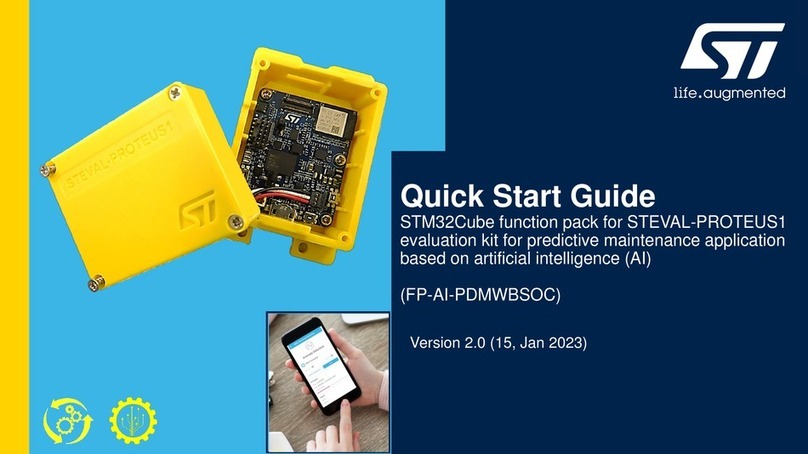
ST
ST STM32Cube quick start guide
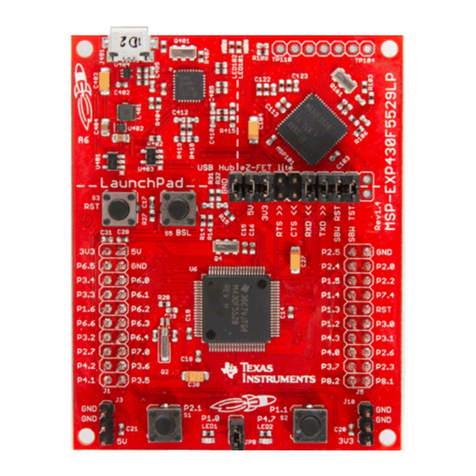
Texas Instruments
Texas Instruments LaunchPad MSP-EXP430F5529LP user guide

Winbond
Winbond W90P710 Programming guide

NetBurner
NetBurner NNDK-MOD5234LC-KIT quick start guide
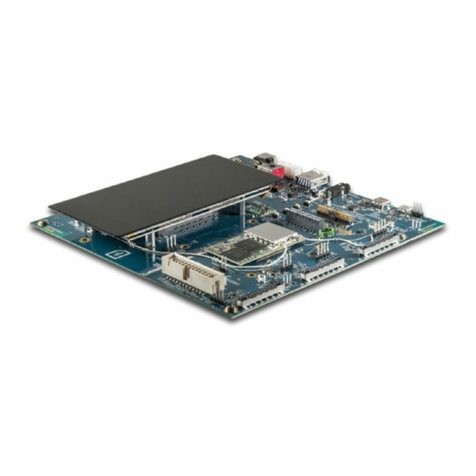
Intrinsyc
Intrinsyc Lantronix Open-Q 865XR SOM quick start guide
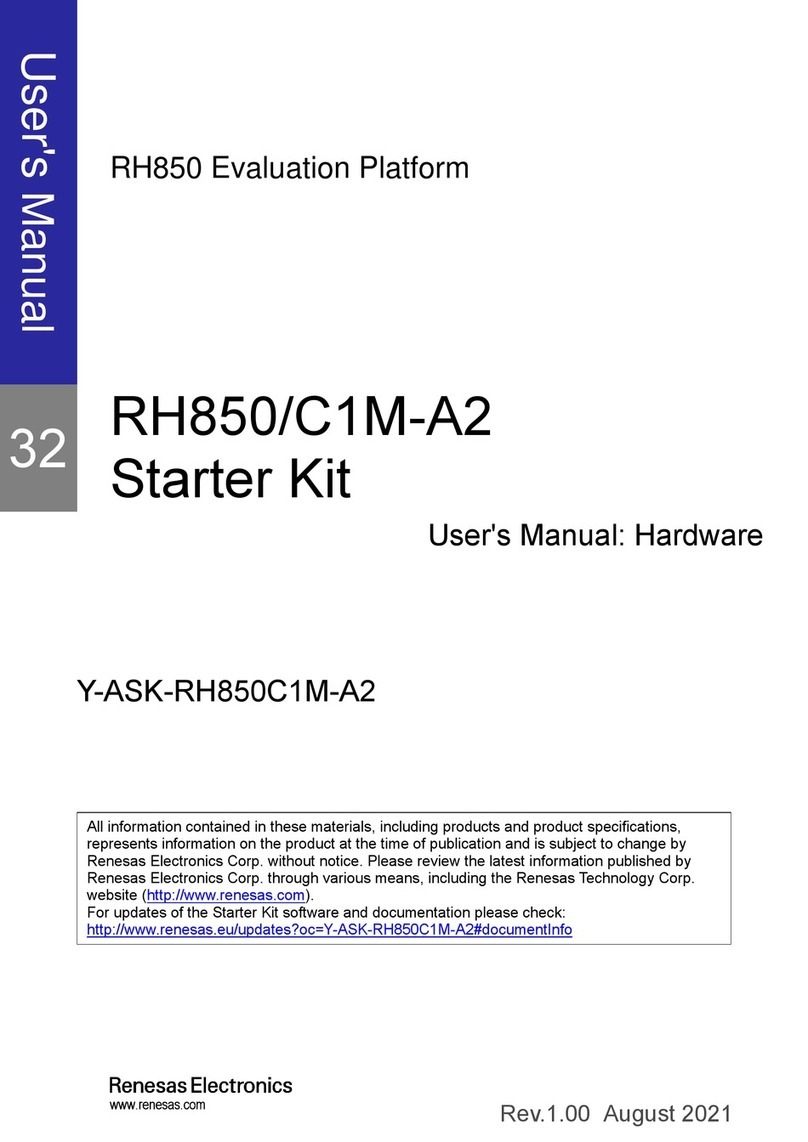
Renesas
Renesas RH850/C1M-A2 user manual
